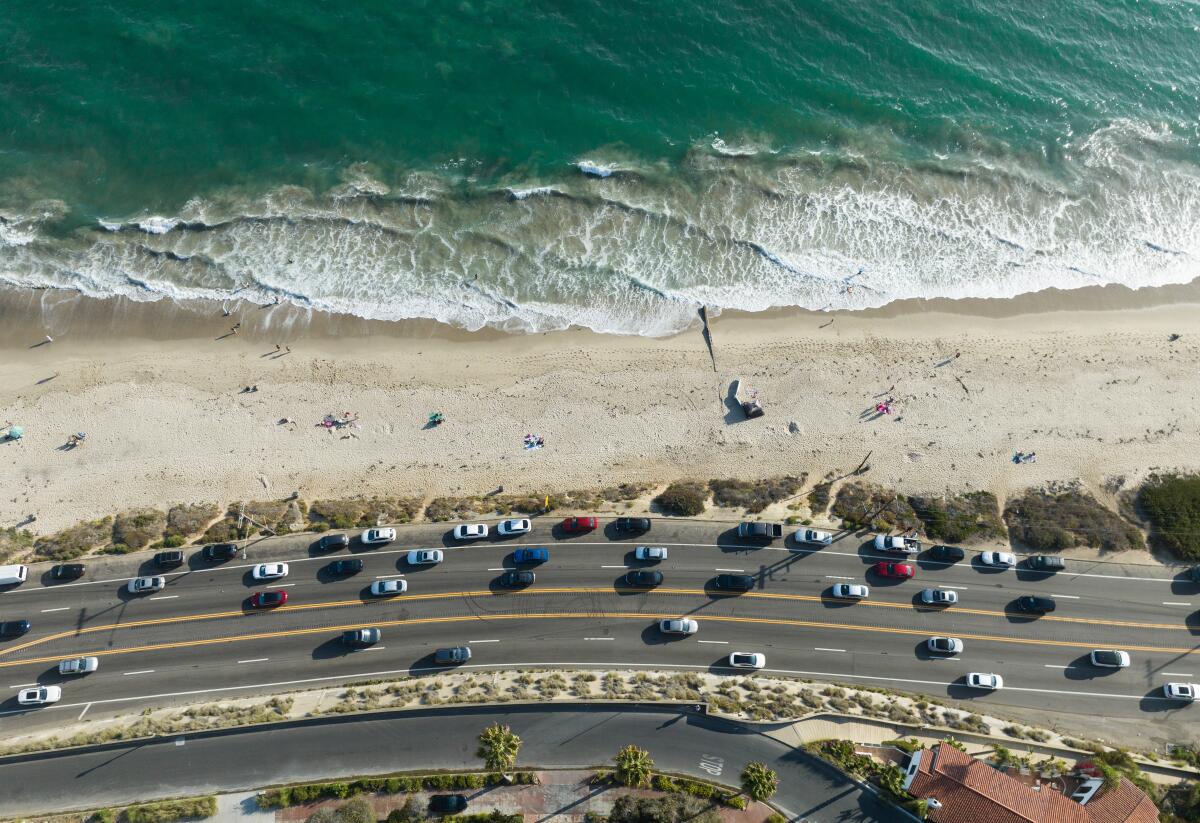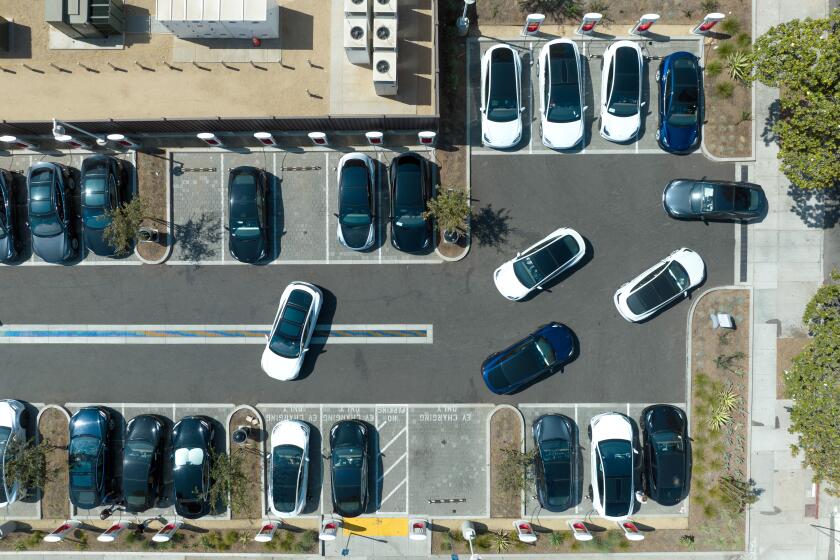No on Proposition 30

- Share via
There is probably no climate program in California that is more urgent than the transition to zero-emission vehicles. Transportation is the state’s largest source of planet-warming and health-damaging emissions by far. We will not meet our obligations to reduce pollution unless we move quickly to build the charging infrastructure and replace the tens of millions of gas- and diesel-fueled vehicles on our roads with electric cars, trucks, buses and other zero-emission models. But they remain too expensive and out of reach for many residents and businesses.
The question, then, is how to pay for this estimated $150-billion clean-vehicle transformation?
Proposition 30 on the November ballot would do it by raising taxes on the rich to pay for electric vehicles and charging stations. While it may be tempting to put the burden on the rich — again — for one of California’s top priorities, voters should say no. Proposition 30 has too many flaws. It’s bankrolled by one special interest and it doubles down on an unsustainable funding model.
Proposition 30 would increase the tax on personal incomes above $2 million a year — the top 0.2% of taxpayers — by 1.75% and raise $80 billion over the next 20 years to subsidize zero-emission vehicles and charging stations, and help pay for wildfire response.
The L.A. Times’ editorial board endorsements for statewide ballot measures, elected offices in Los Angeles city and county, L.A. Unified School District board, L.A. county superior court, statewide offices, the state Legislature and U.S. House and Senate seats.
California already has the highest state income tax rate, at 13.3%, and voters have already raised taxes on the wealthiest residents to pay for education and mental health services. Proposition 30 would push the top-earner rate to 15.05%, which is much higher than other states, most of which have income tax rates in the single digits. The state’s dependence on wealthy residents’ income, which is often tied to investments and the stock market, creates tremendous instability in the budget. Revenues sharply rise and fall with Wall Street, leading to feast-or-famine cycles. It doesn’t make sense to pin another priority on such a volatile funding stream. Proposition 30 could also drive investors who fund high-risk technologies out of the state.
Proposition 30 is backed by environmental and public health groups, unions representing firefighters and electrical workers and clean transportation businesses. But the Yes on 30 campaign is funded almost entirely by Lyft, which has spent $25 million in support of the measure. That has been seized on by opponents, including Gov. Gavin Newsom, who has called Proposition 30 “one company’s cynical scheme to grab a huge taxpayer-funded subsidy.”
The increase in vehicle incentive funds would help Lyft and other ride-hailing firms comply with a new state requirement that 90% of their vehicle miles are electric by 2030. This is the second time Lyft has spent big at the ballot box to shape California policy to its own advantage, and that’s troubling. The company spent nearly $50 million in 2020 to pass Proposition 22 to override state law and keep its drivers as independent contractors, rather than employees.
Still, the state does need to identify a long-term funding source for the transition to clean cars. California’s existing clean-vehicle rebate programs have suffered from insufficient and inconsistent funding, with applicants facing long wait lists, money that runs out too quickly and other discouraging obstacles. State spending on clean transportation incentives has averaged about half a billion dollars a year since 2013, but the annual allocations have swung dramatically up and down, with lawmakers budgeting only $29 million in 2020, followed by $1.5 billion last year and $2.6 billion this year.
Newsom has pledged $10 billion over six years to subsidize the purchase of zero-emission cars and trucks and the development of charging stations. President Biden’s infrastructure law included $7.5 billion nationwide to build out a national charging network, and the Inflation Reduction Act includes up to $7,500 in tax credits for the purchase of a new electric vehicle. The Newsom administration is betting that those funding infusions, along with regulations, will kick start the market and bring down EV prices to match internal combustion-engine vehicles. There will still need to be funding to help low-income Californians and small businesses make the switch.
California regulators’ vote to ban sales of new gas-fueled cars by 2035 is a huge milestone for a state built on the automobile and finally puts the end of the internal combustion engine in sight.
There’s some concern that Proposition 30, which would generate between $3 billion and $5 billion a year, could send EV prices higher. Because of the supply shortages affecting the car market recently, some economists warn that an influx of additional vehicle incentive money could be pocketed by car dealers and manufacturers through higher prices. Proponents argue those concerns should fade as automakers ramp up production to comply with requirements that manufacturers sell increasing percentages of zero-emission vehicles, starting with 35% in 2026 of new car sales until they reach 100% by 2035.
Proposition 30 would also lock in a tax hike and a funding scheme for 20 years with little flexibility to cancel or make significant changes to the program to meet evolving needs. What will happen when there is another funding priority in the next decade or two?
Yes, California needs more money to accelerate the transition to zero-emission transportation. But Proposition 30 isn’t the right way to do it.
More to Read
A cure for the common opinion
Get thought-provoking perspectives with our weekly newsletter.
You may occasionally receive promotional content from the Los Angeles Times.











